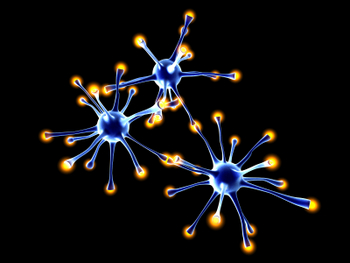Protein Acts as Miracle-Gro for Neurons, Slows Brain Disease
 |
A protein that promotes the growth of neurons and blood vessels appears to stop the progression of a genetic disease that causes degeneration of the cerebellum, according to new preclinical Northwestern Medicine research published in Nature Medicine.
The disease, spinocerebella ataxia type 1, typically strikes people in the 30s and 40s and causes degeneration of the cerebellum, the part of the brain that helps coordinate movement. As the disease progresses over 10 to 20 years, patients eventually die from aspiration or infectious pneumonia.
The disease is caused by a mutation in a protein called ataxin-1, which plays a role in regulating a protein called vascular endothelial growth factor or VEGF. When Northwestern scientists replenished VEGF in the brains of a mouse model of this disease, their brains – which had showed atrophy in the cerebellum — began to appear more normal, with an increase in connections between neurons. The mice also had improved balance.
“If you give VEGF early in the disease, you prevent degeneration later in life,” said Puneet Opal, MD, PhD, associate professor of neurology and of cell and molecular biology at Northwestern University Feinberg School of Medicine and a neurologist at Northwestern Memorial Hospital who also treats ataxic patients. “We think VEGF increases the blood vessels in the brain, but also directly prevents neurons from dying in this disease. These results hold the potential for future therapy.”
The study also provides a new understanding of the degenerative disease. Because patients are born with the mutation for the disease but don’t show signs of it until midlife, Opal said that indicates the aging process appears to play a role in development of the disease.
“There could be a connection between a patient’s genetic mutation and their blood vessels not keeping up as they age,” Opal said. “When we delivered VEGF to the brain and increased blood vessels, the disease stopped progressing in mice.”
The study was funded by the National Institutes of Health, the National Ataxia Foundation, and the Brain Research Foundation. Other authors include Marija Cvetanovic, PhD, and Jay M. Patel, also from Northwestern; and Ameet R. Kini and Hugo Marti from Loyola University Chicago Stritch School of Medicine and the University of Heidelberg, respectively.
|
Members of the media, please contact Marla Paul via e-mail or at (312) 503-8928 for more information about this story. |






